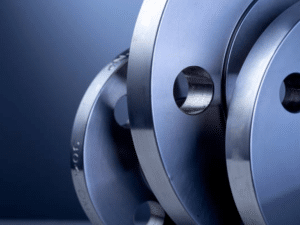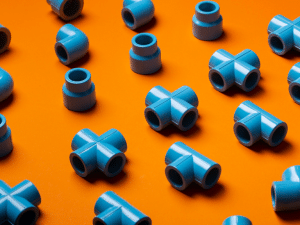Advantages and Disadvantages of Welded Pipes Compared to Seamless Pipes
Industrial projects require a specialized examination to select the right type of pipes. Welded and seamless pipes are the main types in the market, with distinct characteristics serving particular needs. This blog explores welded and seamless pipes by explaining manufacturing methods, advantages, and disadvantages while examining what to consider when selecting between the two.
H2: Understanding Welded and Seamless Pipes
What Are Welded Pipes?
Welded pipes are durable, cost-effective piping solutions used across various industries, including construction, oil and gas, and water transportation. They offer high strength, corrosion resistance, and versatility for low to high-pressure applications. Due to their broad applications in water delivery systems, construction, and energy transport projects, industries use welded pipes as the preferred choice in multiple operations.
What Are Seamless Pipes?
Seamless pipes are high-strength, reliable piping solutions widely used in industries such as oil and gas, power generation, and chemical processing. Manufactured without weld seams, seamless pipes provide superior pressure resistance, corrosion durability, and a smooth interior. Their seamless design enhances structural integrity and overall strength.
Key Differences in Manufacturing
Welded pipe manufacturing using edge welding minimizes production expenses and enhances efficiency.
A tube formed from a solid steel billet offers strength, making it ideal for high-temperature and high-pressure applications.
Advantages of Welded Pipes
Cost-Effectiveness
Welded pipes remain cheaper because of their simpler production process. The procedure to manufacture welded pipes requires fewer steps and takes a shorter time than the process for seamless pipes. Two simple steel plates are welded together to make pipes requiring minimal resources and fewer production steps.
Availability in Larger Sizes
Due to their manufacturing process, welded pipes are available in larger sizes and longer lengths than seamless pipes. Manufacturers can produce welded pipes with specific dimensions that exactly match industrial requirements.
Faster Production Time
The manufacturing line produces welded pipes faster than seamless alternatives. Welded plates are quicker to process than seamless pipe technology since steel plates only require welding to form the final product.
Consistency in Wall Thickness
Welded pipes retain a uniform wall thickness due to their streamlined and consistent manufacturing process. Due to their stable pull strength throughout the entire product length, industries can use welded pipes for multiple purposes.
Disadvantages of Welded Pipes
Presence of Weld Seams (Potential Weak Points)
The welded seam in pipes is their biggest drawback, as it can create potential weak points that compromise strength and durability. Despite advanced welding tools, the welded joint still poses risks when under strong pressure or used demandingly.
Lower Pressure and Strength Ratings
The walls of welded pipes are less effective at withstanding pressure than seamless pipes. The presence of a welded seam creates a potential weak point, reducing the pipe’s strength under high-pressure conditions. Due to the increased risk of leaks, welded pipes are not ideal for applications that require maximum pressure resistance.
Higher Risk of Corrosion at Welded Joints
Welded pipes are more prone to corrosion at the joints, as the heat treatment during welding can weaken the surrounding area, making it more susceptible to rust and other forms of degradation.
Advantages of Seamless Pipes
Higher Strength and Durability
Due to their design, seamless pipes are inherently stronger than welded pipes. Without a welded seam, they maintain uniform strength and structural integrity along their entire length. Seamless pipes function perfectly in demanding applications that require durable components because they do not contain weak points along their length.
Better Resistance to Pressure and Temperature
Seamless pipes enable smooth fluid transport under high pressure, eliminating the risk of seam-related failures for enhanced reliability. The material shows superior resistance against temperature changes, which makes it useful across power generation operations and exploration sectors of oil fields and petrochemical plants.
No Welded Seams, Reducing Corrosion Risk
Seamless pipes lack welded seam connections, so they demonstrate strong resistance against corrosion and cracking. Their durability surpasses that of welded pipes, making them ideal for corrosion-prone environments such as offshore drilling and chemical processing facilities.
Disadvantages of Seamless Pipes
Higher Production Cost
The strict manufacturing procedure for seamless pipes demands specific industrial equipment, driving their price point higher than that of welded pipes. Seamless pipe production expenses exceed most project budget ranges, so they do not work well in limited financial circumstances.
Limited Size Availability
The maximum diameter of seamless pipes is limited compared to the larger sizes achievable with welded pipes. While seamless pipes can be manufactured in various dimensions, producing larger-diameter pipes becomes increasingly complex and costly.
More Complex Manufacturing Process
The manufacturing process of seamless pipes requires greater complexity and extended time than that of welded pipes. As a result, fulfilling large orders takes more time and incurs higher manufacturing costs. Welded pipes offer excellent cost-effectiveness and quick availability, making them ideal for time-sensitive projects requiring efficient and affordable solutions.
Key Factors to Consider When Choosing Between Welded and Seamless Pipes
Several important points must be considered when deciding between welded and seamless pipes. Here is a comprehensive overview of these factors:
Application Requirements
Pipes of a particular type are selected based on their required performance. Seamless pipes perform best in environments that require strong resistance to heavy pressure and heat with acidic substances. Welded pipes, including lower-pressure settings, should be used for industrial applications and construction projects.
Budget Constraints
Seamless pipes come at a higher cost due to their specialized manufacturing process. However, welded pipes provide a reliable performance for a more budget-friendly option without significantly increasing expenses.
Industry Standards and Specifications
Industries must select their pipeline materials according to safety and professional standards. Roller burners manufacture seamless pipes designed for high-pressure applications in oil and gas operations, whereas welded pipes are produced for structural support in construction.
Conclusion: Which Pipe Type is Best for Your Needs?
Choosing between welded and seamless pipes ultimately depends on your project’s needs. Welded pipes are affordable, readily available in larger sizes, and quick to produce, making them ideal for general applications where cost is a significant factor. On the other hand, seamless pipes offer strength, durability, and corrosion resistance, making them the preferred option for high-performance industries where pressure, temperature, and reliability are critical.
FAQs
Q1: Which is stronger, welded, or seamless pipes?
Seamless pipes are stronger than welded pipes because no joining points weaken their structure. Their uniform section design allows them to withstand more stress and pressure, making them effective in oil and gas lines, power plants, and hot areas.
Q2: Are welded pipes more prone to failure than seamless pipes?
The welded area of the pipe stands out as the point where it shows greater vulnerability where it’s at its weakest, as compared to seamless pipes. Seams in welded pipes are prone to weakening, especially under high pressure or chemical exposure. However, advancements in welding technology have significantly improved their durability, making them suitable for industrial applications.
Q3: Why are seamless pipes more expensive than welded pipes?
Smoothing production requires advanced equipment and superior technologies, which adds to the increased cost of seamless tube manufacturing. Producing these pipes demands high-precision machines because they start as solid steel blocks and never undergo welding. The stronger and longer-lasting pipes create higher costs than welded alternatives during production.
Q4: What industries prefer welded pipes over seamless pipes?
Construction, water supply, and building companies select welded pipes because they need large-diameter products at affordable rates. Welded pipe suppliers also prefer welded pipes to make automotive components and fences and transport lower-pressure oil and gas supplies. Welded pipes offer excellent value for money, making them a helpful solution.
Q5: How can corrosion in welded pipes be prevented?
Corrosion in welded pipes can be prevented by applying protective coatings, using corrosion-resistant materials like stainless steel, and ensuring proper maintenance. Regular inspections, cathodic protection, and anti-corrosion treatments such as galvanization or epoxy coatings can help extend the lifespan of welded pipes in harsh environments.
Q6: Can welded pipes be used in high-pressure applications?
Industries use welded pipes in high-pressure operations to meet essential safety standards during production and testing procedures. The welding process needs higher frequencies with heat treatment to boost pipe strength. Seamless pipes perform better than welded pipes when handling intense pressure at a distance.







